Published 02 Jul 2025
AI Investing vs. Manual Investing: Which Works Better in 2025?
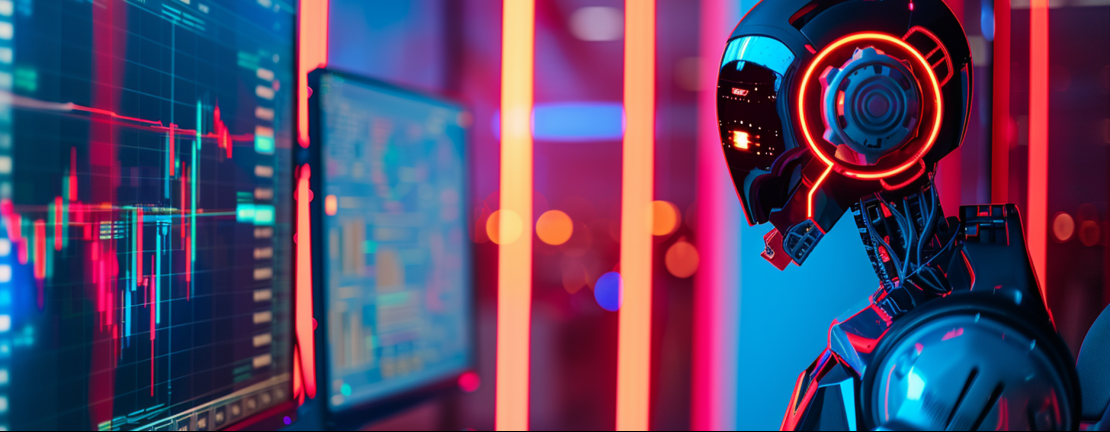
Performance and Insights
More retail investors in crypto are turning to artificial intelligence tools instead of just sticking to manual strategies. By the middle of 2025, over one-third of retail investors rely on AI-based tools to guide or handle trades. The rise of these systems comes from their potential to boost profits, save time, and stick to strategies better in the fast-moving, data-packed crypto world.
Below, we look at how AI-driven investing stacks up against manual methods in areas like performance, decision efficiency, adoption rates, and ROI. We also provide real-world examples from regions like the United States, Europe, and Asia.
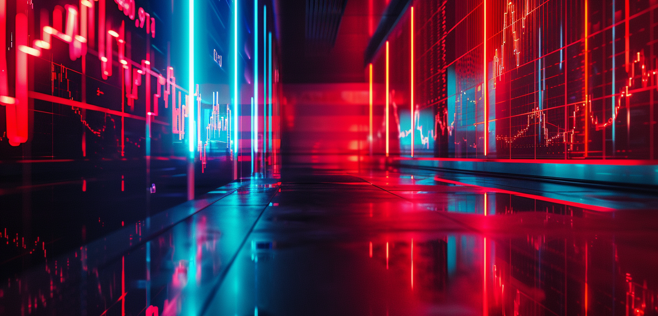
Comparing AI and Manual Approaches to Performance
Looking at performance, AI-based methods and manual strategies show clear differences. AI systems process data faster than manual approaches. They make decisions using algorithms, which often leads to quicker results. Humans, on the other hand, rely on personal judgment and experience, which can slow things down.
AI has the ability to analyze large amounts of information without getting tired. This capability allows it to find patterns and trends that humans might overlook. In contrast, human strategies can focus better on complex tasks that need creativity or emotional understanding.
When it comes to repetitive tasks, AI systems have the advantage. They avoid errors by sticking to programmed rules. Manual methods however, can be prone to mistakes due to fatigue or oversight. So while human touch adds depth, AI often has precision on its side.
Higher Returns
Reports and studies from 2025 reveal that crypto strategies powered by AI often deliver better results than manual trading when looking at pure returns. For instance, algorithmic trading bots when set up , generate returns that are 10–30% higher than manual approaches. A standout, though uncommon, example is the Galileo FX bot, which produced a 500% return within one week on a $3,200 crypto trade boasting a 72% success rate.
These extraordinary gains emphasize the power of AI to grab market opportunities with speed and efficiency far beyond human capabilities. However such results often bring significant risks. Human traders, on the other hand, struggle to achieve such rapid growth unless they rely on leverage or sheer luck.
Win Rates and Consistency
AI trading systems perform far better than the average DIY trader in terms of success rates and steadiness. A 2024/2025 study revealed that AI bots had around an 82% success rate for trades, compared to 43% for trades made by hand. This advantage grows over time as more trades are made. Another report mentioned that automated crypto strategies resulted in 23% higher average profits than traditional manual trading methods.
These differences highlight how well AI’s data-focused strategies can take advantage of market gaps. Human traders tend to struggle because emotions get in the way or because of slower trade execution, which we’ll explore further below.
Risk-Adjusted Returns
AI doesn’t just enhance raw profits; it also improves how well risks are managed. Many AI trading systems stick to strict risk management processes, a discipline that individual investors often find hard to maintain . For example, AI tools can apply firm stop-losses and control how much capital goes into each position. This approach reduces the depth of losses, like capping them at around 7 percent instead of the typical 15 percent that manual portfolios might suffer. Having AI manage a portfolio can lead to smoother performance with lower volatility even while earning better returns.
This often results in higher Sharpe ratios and steadier financial growth. Renaissance Technologies’ Medallion fund is a well-known institutional example. It uses advanced algorithms — an early version of today’s AI — and has averaged about 66 percent annual returns over multiple decades, far outpacing traditional funds. While retail traders can’t copy Renaissance’s exact methods, it highlights how systematic, AI-driven strategies can beat human-based decision-making in the long run.
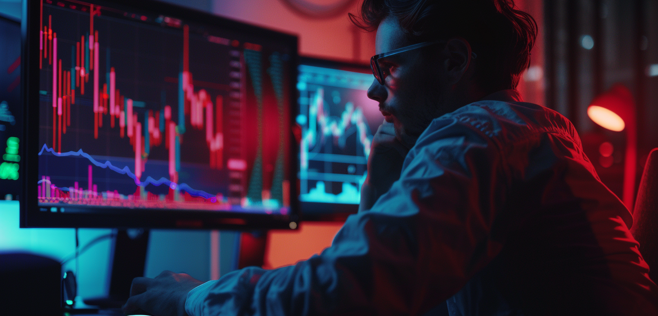
Specific Cases (2025)
Take a look at some actual situations from 2025 to understand these comparisons better:
U.S. Example
A report by Bloomberg in June 2025 revealed that retail stock investors using AI trading tools described these technologies as “shaking up Wall Street.” These tools allowed investors to create strategies comparable to professionals. Some American traders shared how AI-driven crypto bots helped them achieve double-digit gains each month during the early 2025 market rallies.
This performance surpassed those relying on manual trading with high-volatility altcoins. Data also suggests automated trading dominates market activity. By 2023, bots handled over 70% of crypto trades showing how they shape opportunity capture in trading.
European Example
Retail investors across Europe have turned to AI through fintech platforms. eToro one of the well-known platforms in the region, uses AI-based features and has seen users achieve better portfolio results. In early 2025, CEO Yoni Assia said that “AI is turbo-charging the reshaping of the investing landscape” to help retail investors. Trade Ideas, a company known for analytics, provides an AI tool to pick stocks.
Some crypto traders use this tool, which boosts user confidence and leads to better results for beginners. It is common in 2025 Europe to see a hobbyist investor rely on AI bots or signal services to handle a crypto portfolio. These tools often do better than manual buy-and-hold strategies by timing market entries and exits more over a few months.
Asia Example
Asia holds the title for having the busiest retail crypto market , with 22 percent of its population engaged in crypto compared to just 7.8 percent worldwide. AI trading tools are catching on in this region. Countries like Singapore, South Korea, and India known for being tech-savvy, see many individual traders using automated bots for things like crypto arbitrage and tracking market trends. Experts say the Asia-Pacific region trails North America in how it applies generative AI tech, and trading is no exception. By 2025, for example, a Singaporean trading group saw retail traders rely more on AI bots that scanned multiple exchanges around the clock to cash in on tiny price gaps.
These bots performed faster and earned steadier profits compared to manual trading approaches. In emerging markets such as India, which has the highest level of crypto adoption even beginner investors are taking advantage of AI-powered advisors and bots. This blend of local insight and AI precision is helping investors manage their assets more.

How Strategies and Decision Speed Differ
AI-focused investing and traditional human investing show a clear difference in how decisions are made.
Speed and Data Processing
AI systems work much faster and handle more data than humans ever could. A bot completes a trade in just 0.01 seconds while humans need 0.1 to 0.3 seconds at best. This doesn’t even include the time it takes to think it through and decide. AI can track dozens of markets at the same time and handle millions of bits of data every single second. No human can come close to this level of speed and multitasking.
This allows AI to recognize and act on quick arbitrage chances, sudden trend shifts, or changes in news sentiment almost . Skilled manual traders can’t match the speed or the amount of analysis AI achieves. In the real world, this efficiency means AI can scoop up small profits often, like grabbing 0.1 percent gains multiple times a day, which people might miss. Experts say that in fast markets such as crypto, well-programmed AI bots can boost returns by 10 to 30 percent compared to trading done , thanks to their quicker moves and stable reactions to trading signals.
Cold Logic vs. Human Emotion in Trading
AI makes decisions using pure logic. It does not experience fear or greed, and it follows set strategy rules. This avoids the emotional trading mistakes that humans make. Psychological tendencies often cause manual traders to mistime market moves such as selling during panic or overtrading when euphoric. Research shows that using AI reduces emotional trading errors by 47% compared to traditional methods. One measurable outcome of this difference is that AI systems had a success rate of about 82%, while manual trades succeeded 43% of the time.
Much of this is because people tend to abandon strategies when under pressure. AI operates on data, whereas retail traders often rely on gut feelings or follow crowd behavior. For example when Elon Musk tweeted about Dogecoin many human traders jumped in and caused a price surge before most AI systems could assess the tweet's meaning. That specific situation gave human traders a fast advantage. Yet, in most trading scenarios, emotions do more harm than good. AI’s steady, rule-based approach avoids rash decisions like chasing trends or increasing bets on losses. As one proponent of AI trading once said, “Bots don’t panic sell”.
Adaptability and Intuition
Humans have an edge when it comes to adjusting to new and challenging situations. Experienced traders process unstructured details, like news about regulations or global events, and use their instincts to make decisions. A strict algorithm might miss such insights. For example, during a sudden geopolitical crisis, a trader might leave the market—something a programmed bot will not do unless instructed. In the chaotic market conditions of 2025, some manual investors did better than algorithms because they changed tactics, like shifting to safer assets before significant events. AI tools however, are narrowing this advantage.
Advanced AI models now handle tasks like performing sentiment analysis on headlines and social platforms adjusting their moves based on the mood of the market. While AI systems can now do what was once a human specialty—reading the tone of the news or social media — they still struggle with interpreting brand-new situations. This highlights the key difference — strict following of rules versus flexible thinking.
AI excels in sticking to proven strategies, which makes it great for pattern-focused trading and controlling risks. On the other hand human traders sometimes outperform by bending the rules to handle unpredictable scenarios. Many top investors in 2025 combined both methods using AI systems for their speed and accuracy in processing data and human intuition for bigger decisions or creative moves.
Efficiency and Bandwidth
AI systems work round the clock without getting tired, which is key because crypto markets never stop. Humans, on the other hand, need sleep and can monitor markets for a limited number of hours each week around 40 to 50 hours. In comparison, an AI trading bot runs nonstop all week covering 168 hours. This constant operation allows AI to notice price changes during the night or follow global market sessions that a human trader might miss.
For instance, a U.S. trader’s bot can handle European morning market activity while the trader is asleep. AI also manages to keep track of many asset pairs across several exchanges at once, a task too overwhelming for any single person to handle at the same time. This combination of consistency and reach gives AI an advantage making sure no chance is overlooked because of human needs like rest or limited attention.
AI processes decisions using data and avoids emotions, which makes it different from how humans act slower and rely on intuition. Both have their own advantages. AI does well when it comes to speed, being reliable, and spotting complicated patterns. On the other hand, humans bring flexibility and creative strategies.
By 2025 most routine trading shows that AI has an advantage in performance and results. But the best outcomes happen when traders treat AI as a helpful tool rather than a total replacement. For example, traders can let AI handle routine tasks like trade automation and alerts while they keep an eye on things and step in when necessary.

Efficiency in Decision-Making and Strategic Variations
The way decisions are made is one sharp difference between investing with AI and relying on human judgment.
Speed and Data Processing
AI systems work much faster and handle much more data than humans can. A bot can finish a trade in just 0.01 seconds, while a person would need at least 0.1 to 0.3 seconds, and that's not even counting the time it takes to think and decide. AI programs keep track of many markets at once and process millions of data points every single second, something no human could do. This ability helps AI spot and act on brief opportunities like price gaps, new market trends, or changes in news sentiment.
Even the best manual traders can't compete with the speed or the depth of this analysis. With this, AI takes advantage of tiny profit margins, like making 0.1% gains multiple times a day, which people might miss. Experts estimate that in fast-paced markets like cryptocurrency set-up bots can add anywhere from 10 to 30 percent more returns compared to trading because they act quicker and respond better to signals.
Emotionless Logic vs. Human Behavior
AI makes trades following pure logic. It does not feel fear or greed. It follows its preprogrammed rules without fail. This removes the emotional mistakes that often trip up human investors. Panic selling or overconfident buying can make people misjudge markets, but AI avoids these traps. Research shows AI systems cut emotional errors by 47% when compared to human investors. One measurable example found that AI trading systems were accurate about 82% of the time, while humans succeeded 43% of the time.
Much of the difference came from people abandoning their strategies under pressure. Unlike human traders who rely on emotions or follow the crowd, AI bases all its decisions on data. For instance when Elon Musk tweeted about Dogecoin many human traders rushed to buy it pushing up the price before AI systems even processed the implications of the tweet. In unusual cases like that quick decisions gave people the upper hand. Still, most of the time, emotions reduce success instead of improving it. AI’s steady approach prevents impulsive decisions like buying into hype or trying to recover losses with risky trades. As some in AI trading say, "A bot never panic sells".
Adaptability and Intuition
Humans have the edge when it comes to adapting to complicated and unexpected situations. Experienced traders can piece together unstructured details, like announcements about regulations or global events, to make quick, gut-driven choices that rigid algorithms might overlook. For example, if an unexpected political crisis happens, a person might step back from trading — something an algorithm would do if instructed. During some volatile market periods in 2025 certain human investors beat algorithms by shifting strategies , like moving to safer investments ahead of critical events.
AI is catching up though. Unlike earlier bots that followed strict rules advanced AI tools now analyze news headlines and social media for sentiment adjusting their moves . Tasks like assessing market emotions, which used to rely on human judgment, are now automated. However, AI still struggles with understanding new or unusual scenarios. This creates a key distinction — AI sticks to consistency and proven methods while human traders bring flexibility and creative problem-solving.
AI performs best in tasks like quick data-crunching and precise trades, while human investors tend to thrive when interpreting unforeseen market forces or bending rules as needed. Many top investors in 2025 blended both pairing AI's speed and precision with human insight for better big-picture decisions or imaginative strategies.
Efficiency and Coverage
AI systems run non-stop, which is great to handle crypto markets that operate all day, every day. Humans need sleep and can focus on markets part-time about 40–50 hours a week at most. An AI trading bot works full-time covering all 168 hours in a week. This constant attention lets AI spot price changes overnight or during market hours in other regions that human traders might sleep through. For example, a U.S. investor using AI can trade during Europe's morning market moves without staying awake.
AI also handles many asset pairs on multiple exchanges at once, a task no single human can do. This continuous tracking and broad coverage give AI a big advantage making sure it doesn’t miss chances that human limits like rest or distractions might overlook.
AI makes fast decisions using data and avoids emotions, while humans rely more on intuition and work at a slower pace. Both methods bring unique strengths. AI stands out because of its speed, reliability, and ability to spot complex patterns. On the other hand, humans bring flexibility and creative strategies to the table. By 2025, studies show AI delivers better efficiency and higher profits in routine trading. However, the best approach combines both. Traders use AI as a helpful tool to handle simple tasks like automating trades and alerts while stepping in to monitor or adjust when necessary.
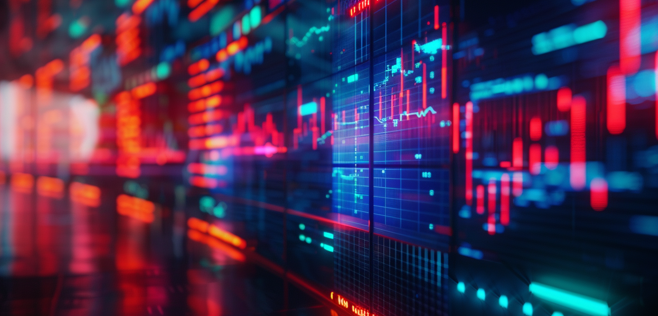
User Adoption and Global Trends (2025)
Retail Investors Embrace AI: By 2025 retail investors in crypto have adopted AI-powered investing tools. Over 37% of these investors now rely on AI systems to shape their investment choices marking a huge jump from a few years earlier. People use everything from trading bots that handle trades to advisory apps that offer portfolio advice or assess coins. These tools aim to “level the playing field” by offering advanced insights and actions once available to professionals. Platforms also notice higher activity whenever they roll out AI-enabled features signaling how much users value these innovations.
eToro’s Q1 2025 results showed more trading and a rise in users. The company credited new AI tools as part of the reason. They said retail investors in 2025 seemed better informed and more connected with help from AI. In the U.S. big brokers and crypto platforms introduced AI research assistants and bot markets aimed at customers. At the same time European copy-trading networks added AI features to let users copy leading strategies or get trading signals picked by AI algorithms.
Looking at Geography
Regional trends play a big role in adoption.
United States
AI has caught the attention of retail traders in the U.S. during the AI surge in 2023 and 2024 fueled by tools like ChatGPT. A growing wave of American do-it-yourself investors began trying out AI-driven bots to trade stocks and crypto. Reports from eToro and Bloomberg show that by 2025, AI-based activity is giving a huge boost to U.S. retail trading volumes. Many American traders now rely on AI to handle basic tasks like finding technical patterns or even generating trading code. AI coding tools have paved the way for people without programming skills to build their own trading algorithms.
One trader shared that with help from ChatGPT, he created a functional TradingView bot script without difficulty raising doubts about the need to learn coding . This accessibility means almost anyone with a trading account and curiosity can run an algorithmic strategy. Financial advisors in the U.S. have also started using AI to optimize client portfolios and combine it with their expertise to achieve better returns.
Europe
A growing fintech landscape in Europe brings retail investors closer to AI-driven investment tools. Platforms such as AI-powered robo-advisors (examples include Scalable Capital in Germany or Nutmeg's offerings in the UK) use smart algorithms to adjust crypto allocations within portfolios. AI technology also powers the dashboards of trading platforms like eToro (an Israeli company with a major European following) or TradePilot AI (a new service launched in the UK), making trading more accessible. Many users say these tools help reduce beginner errors and build their confidence. Surveys show that European retail traders find "24/7 automation" and "taking emotions out of trading" as key benefits from AI-driven bots.
Regulators in Europe work on creating transparent and fair guidelines for AI use in finance, which could encourage more retail investors to adopt such tools. By 2025 many crypto enthusiasts in Europe follow a mixed strategy letting AI execute quick trades or market monitoring while choosing the coins to invest in or deciding when to lock in profits. This often leads to better portfolio results than manual methods driving more interest in AI. Numerous European users have shared how tools, like risk management systems or AI pattern recognition, deliver stronger trading results after adoption.
Asia
Asia takes the lead in crypto adoption and AI excitement. The region’s massive number of crypto users numbering in the hundreds of millions, sets a strong foundation to use AI-driven trading tools. In both 2024 and 2025, more retail traders in Asia started using crypto bots. For example, India — which ranked first in Chainalysis’s global crypto adoption index — has seen retail trading clubs grow. These groups swap tips for using AI bots. Meanwhile, high-tech investors in places like Singapore, Hong Kong, and South Korea rely on tools that combine AI with localized market understanding. Some bots are even fine-tuned to follow regional news stories in multiple languages making them effective.
It’s not just individuals embracing this. Asian crypto exchanges also include AI inside their platforms. They add features such as automatic trading systems and AI-powered market insights to attract more users. A good example is Binance’s AI-driven portfolio tool. Though this feature is available worldwide, it is popular in Asia. It provides individual users with risk scores and advice similar to what hedge fund tools offer. This shift allows Asia’s retail traders to adopt a more structured approach to trading, improving their returns based on the level of risk they take on.
Analysts point out that Gen Z and millennials across Asia-Pacific are quick to trust new technologies, including AI, with their investments. A Boston Consulting Group study shows that AI adoption across APAC companies — and by extension consumers — is happening at a fast pace just behind North America. Thanks to this environment, Asia’s retail investors have taken an early lead in trying out AI within crypto trading, using everything from AI-powered DeFi platforms to simple automated bots.
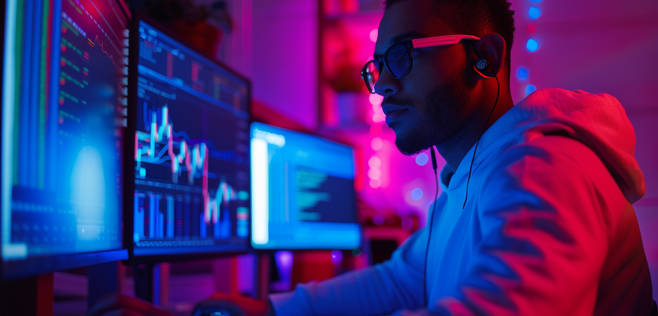
Ideas From Experts and the Industry
The financial world recognizes the changes happening in the industry. A 2025 Deloitte report (referenced by Cointelegraph) estimated that over 25% of companies using AI in finance are experimenting with AI trading agents, and this number might grow to double by 2027.
This highlights a future where AI becomes essential even in everyday retail trading. Many market strategists point out that algorithm-driven and AI-based trading now makes up most of the trading activity in certain markets ranging from 60 to 80 percent in equities and forex, with crypto seeing an increase too.
Experts agree that retail investors who avoid using automation or AI could find themselves falling behind in fast-paced spaces like crypto. A tech analyst summed it up by saying, “Bots are beating humans in crypto”, which forces investors to either keep up with technology or risk being left out.
Behavior and Strategy: Emotional Thinking vs. Data-Based Decisions
A key difference between human-managed investing and AI-driven methods lies in human behavior. People tend to let emotions take over. Fear of missing out makes them buy when prices are high. Panic makes them sell when prices drop. On the other hand, AI lacks these emotional urges. It sticks to its plan without hesitation. This difference in mindset causes each to make different kinds of strategic moves.
Emotional Trading Mistakes
Many retail traders find it very hard to keep emotions in check during crypto trading. Bitcoin and Ethereum’s sudden price swings can push people to act on impulse. For instance, someone might panic after a quick 20% drop and sell off their investments to switch to cash locking in their loss. Meanwhile, an AI would follow its strategy and might even buy during the dip if its algorithm suggests it. These kinds of reactive moves often lead manual traders to poor outcomes.
AI’s rule-based and data-focused approach helps avoid such errors by sticking to planned buy or sell decisions without relying on instincts. By 2025, plenty of retail investors realized this from experience. Those who followed their feelings during trades often ended up trailing behind AI-powered strategies, which stayed calm and focused on rebalancing or mean reversion. AI’s emotion-free methods produce smarter, data-backed choices rather than rushed ones.
Strategic Complexity
People still excel at grasping context and creating complicated strategies that are tough to translate into code. A savvy trader, for example, might mix technical chart reading with staying aware of the economic calendar in ways that aren't easy to program. But AI tools powered by machine learning and even natural language processing are closing this gap fast.
Back in 2025, we saw early AI systems that could shift tactics after analyzing Federal Reserve announcements or major news headlines — something that used to need human thought. Even so many everyday investors pick specific ways to use AI in trading. They might depend on an AI bot to handle rapid tasks like scalping small price changes but stick with human intuition when it’s about bigger moves, like spotting trends or betting on a new ICO token — where speculation, gut instincts, and some kind of research come into play.
Example – Hybrid Approach
A noticeable trend in 2025 shows how popular hybrid trading methods have become. Take a European crypto trader as an example. They might use a bot to automate a grid trading strategy making trades without emotions getting in the way. But when something significant looms, like an important EU legislation vote, they might step in . They could stop the bot for a bit or adjust their exposure.
This strikes a balance by using AI’s speed and keeping human judgment for unpredictable moments. Lots of platforms make this easy by offering AI tools to execute trades or give advice while still letting users control the settings and take over when needed. Retail investors who see the best results often mix AI capabilities with their own decision-making instead of relying on one approach.
AI trading relies on strict systems and numbers. It makes quick and repeatable choices without losing focus. Manual trading feels more adaptable and at times inventive, though it often veers into inconsistency. Emotional versus algorithm-based methods lead to very different results, with AI providing steadier choices.
Experts often suggest that retail investors should avoid emotional trading by using preset guidelines or AI-based tools. They still recommend applying human judgment to bigger strategies. By 2025, combining human skills with technology emerges as the main strategy for advanced retail traders.
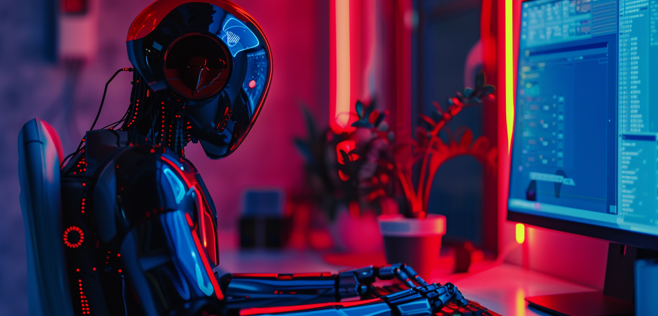
How Investors and Firms View AI
Investors Speak Up
Many individual investors using AI tools talk about their good results. A hopeful quant trader in India shared how he used ChatGPT to create a custom indicator in just a few minutes. This task, he said, would have needed days if done. He even questioned whether traditional coding skills are still essential in trading today. Some investors mentioned that AI bots act like an extra set of eyes on the market.
These bots help spot risks or chances they would have overlooked. For example, users of the bot platform 3Commas said its automated alerts helped them avoid major losses. The bot sold assets when specific technical levels were reached, a move they might have hesitated to make themselves.
Surveys from 2025 reveal that many retail traders value how AI helps maintain discipline:
A U.S. crypto trader shared, “The bot follows the stop-loss I set. I used to ignore it sometimes and then regret it later.” A hobbyist in France added, “I feel less stressed at night knowing AI watches over my crypto portfolio. If things take a bad turn, it reacts, unlike me—I might not wake up in time or could freak out.”
These stories highlight how AI acts as a steady risk manager and a helpful assistant.
Case – Firms and Funds
Smaller investment firms and crypto funds that target retail clients have shared how they apply AI in their work. In early 2025, a crypto fund from the UK revealed that using AI signal analysis in their trading improved their portfolio’s Sharpe ratio. This happened because AI spotted subtle on-chain patterns human analysts missed.
In Asia, fintech startups like Apollo Singapore Investments in Singapore use AI to predict market trends and detect fraud in crypto trades. Apollo's CEO, Kunal Chowdhry, mentioned how combining AI and blockchain is helping create more efficient systems. He explained that their AI-driven strategies aim to provide stronger results for their clients.
Big names in the industry highlight similar thoughts. eToro’s CEO (as noted before) views AI as something that could change the game for retail investors. Binance and Coinbase shared perspectives back in 2025 about how AI might assist users. They pointed to tools like AI chatbots that answer questions from investors and systems that recommend portfolios based on AI analysis.
A Coinbase blog revealed that new users who followed its AI-based educational tools and auto-trading tips often performed better over six months compared to those who traded without guidance. This suggests that AI may help beginners avoid typical mistakes.traded without guidance. This suggests that AI may help beginners avoid typical mistakes.
What Experts Think
Experienced market analysts have a mix of opinions worth mentioning. Some long-time traders warn that AI is not a one-size-fits-all solution. One strategist from Wall Street explained, "An algorithm works as well as the quality of its design and data. Trusting AI can lead to problems." This points to instances when AI systems have gone wrong, like flash crashes or faulty programming. Still most believe it's unwise to ignore AI. By 2025, many think teamwork between humans and AI will shape the future of investing. AI handles complex tasks while people steer the process with their insights.
The leader of a quant fund mentioned that retail investors using AI “are becoming mini-quant funds”. He described this as an exciting step toward making finance more accessible to everyone.
Behavioral finance experts explain that AI cannot eliminate human psychology. Investors still need patience to follow AI's strategy without stepping in at every moment of uncertainty. In 2025, people who found success with AI tools often showed the same kind of long-term discipline as they would with a planned manual approach. They avoided frequent adjustments or shutting down the bot in reaction to short-term losses.
To summarize, both investors and companies believe AI tools improve outcomes when used . Investors value the precision and speed AI provides. Companies see it as a way to outperform rivals and deliver higher returns. Most people feel hopeful about AI seeing it as a strong partner that helps regular investors make choices like the pros. However, they also recognize its weaknesses, like the need for accurate data and risks of over-reliance. By 2025 many real-world examples confirmed that AI-powered investing is not just a trend but a useful method to achieve better results.
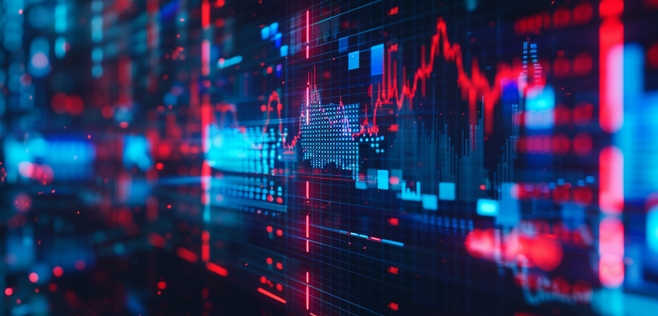
Conclusion
By 2025, AI stands as a key resource for small crypto investors. Many now rely on AI tools and bots to outperform manual trading. These systems provide quicker options to act, reduce risk, and deliver higher gains while keeping emotions out of the equation. They promote steadier and more structured strategies.
AI took off among investors by the middle of the year in 2025. In the United States, people turned to ChatGPT for financial insights, while Europe saw traders leaning on AI-driven platforms. Across Asia, markets led the charge by mixing AI with crypto investments in new ways.
The greatest success happens when AI works alongside human intuition instead of trying to replace it. Investors who balance AI insight with their own judgment often stay ahead. This teamwork led to fewer losses, quicker responses, and steady nerves during unpredictable market moves.
Crypto markets operate nonstop, and AI keeps up with that speed . By 2025 retail investors using AI achieved real profits. This was more than just hype; it showed actual success.
Read More




 Get RateX Pro
Get RateX Pro

 06 Jun 2024
06 Jun 2024
